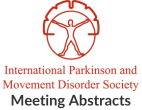An unusual phenotype of spinocerebellar ataxia type 12
Objective: To describe a case of spinocerebellar ataxia type 12 (SCA-12) with an unusual phenotype. Background: SCA-12 is a rare autosomal dominant cerebellar ataxia which…GAD65 antibody neurologic syndrome presenting with hemiparkinsonism
Objective: To describe a novel phenotype of glutamic acid decarboxylase-65 (GAD65) antibody-associated neurological disease in which an older patient initially presented with levodopa-unresponsive hemiparkinsonism and…Two cases of Ataxia Telangiectasia Like Disorder: phenotypic spectrum associated with MRE11 gene
Objective: In this study we show a couple of siblings with a progressive cerebellar ataxia associated with mutation in MRE11A. Our goal is to demonstrate…An uncommon clinical phenotype associated with ANO10 mutation
Objective: To describe a case with a homozygous c.132dupA ANO10 mutation. Background: Autosomal recessive cerebellar ataxia type 3 (ARCA3) is associated to ANO10 mutations. It…Clinical and genetic abnormalities in patients with Friedreich’s ataxia: A genotype-phenotype correlation
Objective: To examine the possibility of molecular finding affecting FRDA phenotype, we studied the clinical features and ascertained the GAA repeat sizes in FRDA patients…Detecting Lower Extremity Ataxia: Toe-Heel Tap is the Best Screening Tool
Objective: Identify the most reliable bedside screening test for lower extremity ataxia. Background: Accurate identification of ataxia is critical for appropriate diagnosis and treatment. The…Clinical correlation with the Genotype of Friedreich’s Ataxia (FRDA) patients in Indian population
Objective: To describe genotype-phenotype correlation in Indian FRDA patients. Background: Friedreich’s Ataxia(FRDA), an early onset rare autosomal recessive ataxia is caused by bi-allelic loss of…Reclassification of variant c.5825C>T and clinical evidence of variant c.3955_3958dup in a Peruvian family with ATM syndrome
Objective: To describe a Peruvian family carrying variants c.3955_3958dup and c.5825C>T in the ATM gene. Background: Pathogenic variants at ATM gene are associated both, to…Gerstmann-Sträussler-Scheinker disease presenting as a late onset slowly progressive spinocerebellar ataxia: expanding the phenotypic spectrum of genetic prion disease
Objective: We describe a late-onset presentation of Gerstmann-Sträussler-Scheinker disease (GSS) with a novel mutation in the prion protein (PRNP) gene. We compare this case to…Plasma biomarker quantification in SCA3 using the Neurology 4-PLEX A kit and the Simoa technology
Objective: We present the results of plasma biomarker quantification in a cohort of spinocerebellar ataxia type-3 (SCA3) carriers using a Simoa assay. Background: Development of…
- « Previous Page
- 1
- …
- 12
- 13
- 14
- 15
- 16
- …
- 27
- Next Page »
